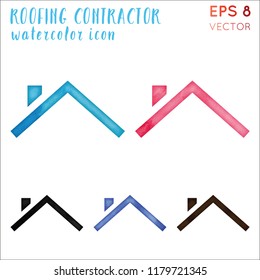Methodical Technique To Preparing Your Wall Surfaces Before Painting
Methodical Technique To Preparing Your Wall Surfaces Before Painting
Blog Article
Short Article Writer-Hickey Pacheco
When you're prepping your walls for paint, it's crucial to comply with a systematic process to ensure a flawless finish. Start by examining the wall for any damages; this step can make or break your project. Once you've identified any type of issues, cleaning the surface area properly is necessary, as a filthy wall can affect paint adhesion. After that, you'll require to spot any kind of flaws and use a guide. However there specify techniques and suggestions that can raise your preparation video game-- allow's discover those further to achieve the very best outcomes.
Assessing Wall Problem
Prior to you grab your paintbrush, take a moment to examine your wall surfaces' condition. Look for any kind of visible damage like fractures, holes, or peeling paint. These blemishes can impact exactly how the paint adheres and looks when it's completely dry. If you discover any kind of considerable damage, you'll require to prioritize repair work prior to diving into paint.
Look very closely at the texture of your wall surfaces. Is the surface smooth, or exists structure that might require unique factor to consider? Smooth wall surfaces usually need less preparation, while distinctive surface areas might need even more time to repaint evenly.
Additionally, think about the previous paint task. If the old paint is glossy, it mightn't enable brand-new paint to stick correctly. You'll want to know if your wall surfaces have been painted with oil-based or water-based paint, as this can impact your option of guide or paint.
Ultimately, keep in mind of any kind of wetness issues. If you see indicators of water damage or mold and mildew, address these issues quickly to stop further issues.
Cleaning up the Surface area
As soon as you've evaluated the condition of your walls, the next action is cleansing the surface area. Beginning by collecting your materials: a pail, warm water, a moderate detergent, a sponge or fabric, and a scrub brush for tougher areas.
Begin at the top edge of the wall surface and work your method down. Mix the detergent with warm water in your pail, then dip the sponge or fabric into the solution. Wring it out to prevent excessive dampness on the wall surfaces.
As you cleanse, pay close attention to areas that may've collected dust, oil, or fingerprints. For persistent discolorations, make use of the scrub brush gently to stay clear of damaging the paint under. Rinse your sponge or fabric often in tidy water to stop spreading out dirt around.
After cleansing, it's necessary to wipe the wall surfaces with a wet cloth to remove any kind of soap deposit. https://rowannuahm.bloggazza.com/32325634/welcome-a-globe-loaded-with-color-and-imagination-through-deck-painting-ideas-that-will-certainly-metamorphose-your-outdoor-area-right-into-an-exceptional-sanctuary makes certain a smooth surface for the new paint to adhere to.
Permit the walls to completely dry completely before going on to the next prep work actions. This thorough cleaning procedure will aid produce a fresh canvas for your paint task, making sure the best outcomes.
Patching and Priming
Patching and priming are essential action in preparing your wall surfaces for a fresh layer of paint. Initially, check your wall surfaces for any kind of holes, splits, or flaws. Utilize a premium spackling substance or patching paste to fill up these areas.
Apply the compound with a putty blade, smoothing it out so it's flush with the bordering surface. Enable it to completely dry totally, and afterwards sand it lightly until it's smooth and even.
When you've covered everything, it's time to prime. Guide assists secure the covered areas, making certain the paint adheres effectively and offers an uniform coating. Select a primer ideal for your wall surface kind and the paint you'll be making use of.
Use the guide using a roller for bigger locations and a brush for corners and edges. If your patched areas are considerably huge or porous, you might intend to use a 2nd coat of guide after the initial one dries out.
After priming, allowed every little thing completely dry extensively before moving on to paint. https://www.bobvila.com/articles/paint-colors-that-make-a-house-appear-dingy/ will not only enhance the look of your walls however also prolong the life of your paint job.
Take your time, and you'll be pleased with the outcomes.
Final thought
By adhering to these easy steps, you can accomplish a smooth and expert finish on your walls. Begin by assessing https://jaredszfko.glifeblog.com/32280669/simplify-the-process-of-hiring-a-paint-professional-with-important-keys-that-will-certainly-improve-your-overall-project-experience , then clean and patch any kind of imperfections prior to using guide. Bear in mind to permit sufficient drying out time and make certain every little thing is smooth prior to you study painting. With the right prep work, you'll set the stage for a beautiful improvement in your area. Currently, gather your products, breathe in the fresh air, and prepare yourself to repaint!
